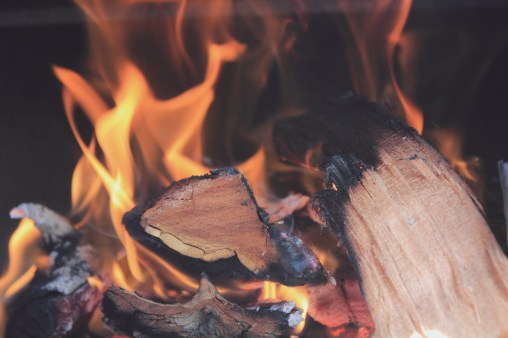
Pitta is a combination of the fire and water elements, with fire as the primary element. Pitta’s chief functions are the metabolic and digestive properties of the body and the assimilation of mental experiences.
Pitta is responsible for the creation of hunger and thirst, the luster of the eyes and skin, and for vision. Pitta is the source of intellect, comprehension, and reasoning capacity and governs recognition and the assimilation of thoughts. It also provides confidence and cheerfulness.
Pitta manifests in the mind as ambition, intelligence, enthusiasm for knowledge, confidence, courage, and concentration. Those with a Pitta constitution are able to grasp information quickly and use it to their advantage. They usually have an alert and focused mind. Pitta memory is excellent for information considered useful for furthering goals but poor at remembering dates such as birthdays and anniversaries.
Pitta Constitutional Characteristics
Body – Medium height and build, may have delicate frame, moderate muscle development
Skin – Fair, soft, lustrous, and warm, coppery or yellowish, tends to burn easily in the sun. Skin has freckles, many moles, a tendency toward rashes, and fewer wrinkles than Vata skin
Hair – Fine and soft, either red or brownish, tendency toward premature graying or hair loss
Face – Heart-shaped, often with a pointed chin
Neck – Average and in proportion
Nose – Neat, pointed, and average in size
Eyes – Average in size, either gray, green, or coppery-brown in color, with an intense luster
Mouth – Medium with average lips
Teeth – Medium-sized and yellowish
Key Qualities of Pitta
- Light
- Hot
- Oily
- Sharp
- Liquid
- Sour
- Pungent
Factors that Increase Pitta
Optimal physical and psychological health requires that you maintain constitutional balance. Different internal and external factors can cause an imbalance, and is it best to restore balance as soon as possible. In order to do that, it is helpful to recognize factors that cause imbalance and act to avoid those factors and remove any excesses. Below is a list of factors that increase Pitta:
- Exposure to heat
- Exercising in the middle of the day
- Alcohol
- Fatigue
- Drugs
- Anger, hate, fear of failure
- Repression of emotions
- Eating too much red meat, salt, spicy, or sour foods
- Too much intellectual work/thinking
- Summer
Signs and Symptoms of Excess Pitta
The following can be an indication of a Pitta imbalance:
- Skin conditions such as acne, eczema, or rashes
- Inflammation in the skin, muscles, or joints
- Loose stools
- Heartburn or ulcers
- Anger, irritability, hostility, or impatience
- Sensitivity to heat
- Nausea when missing meals
- Light sensitivity
To decrease Pitta and bring the body into balance, employ Ayurvedic dietary, lifestyle, and herbal strategies.
Pitta-Balancing Diet
Diet is a key component of the Ayurvedic strategy for decreasing Pitta and balancing the body. Below are some guidelines for which foods to favor and which to avoid:
Favor:
- Sweet fruits such as grapes, watermelon, and figs
- Sweet or bitter vegetables such as asparagus, broccoli, lettuce, and mushrooms
- Barley, oats (cooked), rice, and wheat
- Milk if well tolerated, but do not mix with other foods
- All legumes except lentils
- Cooling foods
- Chicken, turkey, venison, egg whites (Pittas do well without animal foods)
- All sweeteners except molasses or honey
- Cooling spices – coriander, cinnamon, cardamom, fennel, turmeric, small amount of black pepper
- Small amounts of coconut, olive, and sunflower oil
- Ghee
Avoid:
- Sour fruits such as citrus and plums
- Banana, papaya, apricots, and avocado
- Pungent vegetables, carrots, beets, and eggplant
- Garlic, onion, hot peppers, radishes, tomatoes, and spinach
- Buckwheat, corn, millet, brown rice, rye, oats (dry)
- Heating foods
- Beef, egg yolks, lamb, pork, and seafood
- Nuts (except coconut)
- Seeds (except sunflower and pumpkin)
- Molasses and honey
- Most spices
- Almond, corn, and sesame oil
- Buttermilk, cheese, sour cream, yogurt
Pitta-Balancing Lifestyle Recommendations
Movement
Those with a Pitta constitution have a strong tendency toward competition. Activities such as tennis and team sports that trigger competitiveness and can aggravate Pitta. Winter sports such as skiing and snowshoeing are great for balancing Pitta. Swimming and other water sports are also cooling and are excellent options for those with a Pitta constitution. Yoga is extremely beneficial as well, and should ideally be practiced in the cool morning hours.
Travel
Activities such as skiing, kayaking, or backpacking are ideal vacation activities for those who have a Pitta constitution. Colder climates are best, as hot climates can aggravate Pitta. It is helpful to stay active and challenge yourself to keep your mind happy. When planning a vacation, some organization is good, but it is helpful to maintain some flexibility and to be able to adapt when things don’t go as planned.
Pitta-Balancing Herbs
Herbs are an excellent accompaniment to dietary and lifestyle strategies for balancing your constitution. These are some of the best herbs for decreasing Pitta:
Supports digestion and soothes the eyes
Excellent for supporting healthy digestion, calms the nerves and promotes mental alertness
Rejuvenative herb for the reproductive system and the blood, good for treating ulcers and chronic diarrhea
A blend of herbs from Banyan Botanicals designed to decrease Pitta and support overall health
A blend of herbs designed to support digestion and nourish the tissues in the digestive tract
More information about herbs to balance Pitta can be found here.
Your constitution may shift as you move through life seasons and gain new experiences. It can be helpful to periodically test for your dominant dosha. If your constitution changes, you can then make adjustments to diet, lifestyle, and herbal supplementation accordingly.